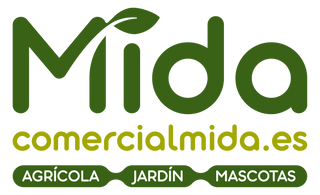The concentrated fungicide against diseases of the rosebushes of Flower is a product of fast absorption and direct application. It is used for preventive and curative control of various diseases and infestations caused by fungi in rose bushes and their flowers. It is an authorized product for your domestic use . Excess water, by rain or irrigation, is the main cause of the appearance of pests in plants. causes a sheet reinforcement and allows a good distribution of the treatment for all the parts of the plants.Its use is recommended in all types of plantations, thanks to its rapid action withpreventive and curative effect which eradicates the problem quickly.
Fungicide diseases of rose bushes, the best concentrated treatment of Flower against fungal pests
The rose bush is a species that can suffer from the presence of fungi such as powdery mildew, rust, anthracnose or mottle . To obtain to protect to these plants from attacks and make them stronger, effective treatments should be applied for the prevention and cure against fungi and parasites.
INDICATIONS
fungicide forpreventatively and curatively combat fungi in rose bushes and other species.
ADVANTAGE
- High quality concentrated fungicide.
- Avoid pests and infections in rose bushes and other crops.
- Suitable for home use.
- For direct application, it does not need dilution.
- It is highly effective against powdery mildew and mottle.
- Protects and strengthens plants.
- For preventive and curative control.
CONCENTRATED FUNGICIDE DOSAGE FOR ROSES DISEASES:
It is recommended to treat preventively, once a month in spring. If climatic conditions (humidity) are favorable to the development of diseases, treat every 12-14 days.
Here we leave an indicative table of the recommended amounts:
| TYPE OF CROP |
ILLNESS |
DOSE |
SECURITY DEADLINE |
| rose bushes |
powdery mildew |
0.2-0.4 ml/liter of water |
not applicable
|
| Artichoke |
EITHERidio and oidiopsis
|
0.2-0.4 ml/liter of water |
7 days |
| Barley, Rye and Wheat |
EITHERidio and oidiopsis
|
0.6-0.9 l/ha |
not applicable |
| triticale |
EITHERidio
|
0.6-0.9 l/ha |
|
| cucurbits |
powdery mildew |
0.2-0.4 ml/liter of water |
7 days |
| strawberry trees |
EITHERidio
|
0.2-0.4 ml/liter of water |
1 day |
| apple and pear |
Mottled |
0.35-0.4 ml/liter of water |
14 days |
| Apple tree |
EITHERidio
|
0.2-0.4 ml/liter of water |
14 days |
| Peach, Nectarine and Apricot |
EITHERidio
|
0.2-0.4 ml/liter of water |
14 days |
| Sugar beet |
EITHERidio and cercospora
|
0.4-0.8 l/ha |
14 days |
| Tomatoes |
EITHERidio
|
0.25-0.4 ml/liter of water |
3 days |
| Vine |
EITHERidio
|
0.2-0.3 ml/liter of water |
14 days |
Contraindications:
- Do not eat.
- Keep away from children.
- For conservation, store the product in a dry and cool place.
- In case of poisoning: go to the hospital with the product to show the label.
HAZARD INDICATIONS AND PRECAUTIONARY ADVICE
dangers
EUH 210 - The safety data sheet can be requested.
EUH 401 - In order to avoid risks to people and the environment, follow the instructions for use.
precautionary advice
P102 - Keep out of the reach of children. (Only for containers intended for domestic outdoor gardening).
P261 - Avoid breathing dust/fume/gas/mist/vapours/spray.
P280 - Wear protective gloves, clothing and mask.
P405 - Store under lock and key.
H411 - Toxic to aquatic organisms, with long-lasting effects.
P273 - To avoid it's releasing into the environment.
P391 - Collect the spill.
P501 - Dispose of the content and/or its container in accordance with the regulations on hazardous waste.
Use biocides safely. Always read the label and biocide information before using it.
COMPOSITION
Tetraconazole (12.5%).
PRESENTATION
10 ml bottle. EAN 8426584305737.
Discover thebest prices andflower deals that we prepare for you at Comercial Mida.

